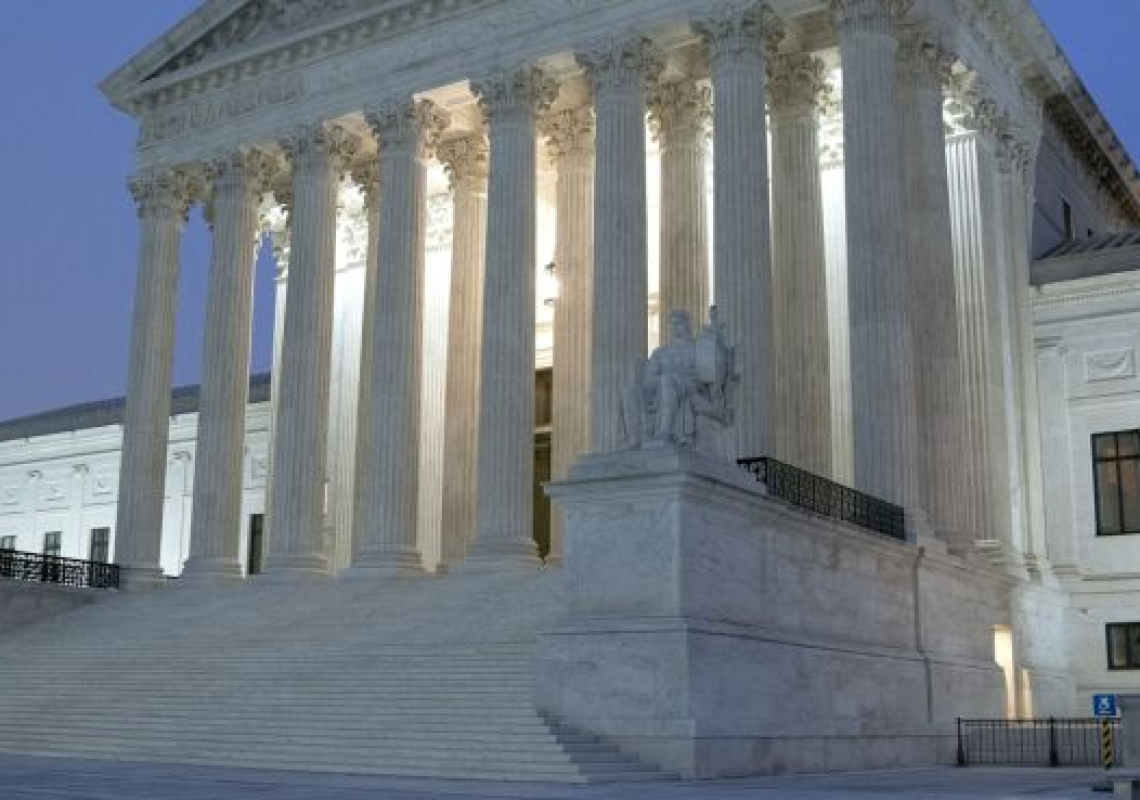By Tonja Jacobi and Matthew Sag
Changing the law to allow 15 U.S. Supreme Court justices would not be court packing. It would allow the court to take many more cases and address some of the urgent issues that it currently neglects, writes Tonja Jacobi, Northwestern Pritzker School of Law professor, and Matthew Sag, professor at Loyola University Chicago School of Law.
A group of House and Senate Democrats recently introduced the Judiciary Act of 2021, a bill to increase the U.S. Supreme Court to 13 justices. They claim this would represent one justice for each circuit court. But it just happens to be the number that yields a liberal majority over the six conservative justices.
There are good reasons to want to pack the court: the conservative court, led by Chief Justice John Roberts, has been laying the groundwork to undermine desperately needed electoral reform, endangering the democratic foundations of the nation.
But court packing would further politicize the judiciary and invite retributive court packing when Republicans inevitably regain power. Nonetheless, court reform is necessary, and expanding the court is vital to fixing what is wrong with the judiciary.
The good news for those favoring court packing is that institutional reform requires expanding the court to 15 justices, not 13. Understanding why requires learning just how broken the Supreme Court currently is.
Supreme Court decisions are labeled “activist” when people oppose their outcomes. This fuels a misconception that the court does too much. But it actually does far too little.
Last year, the Supreme Court decided 73 cases. In the 1980s, the court heard more than twice that,160 cases per term on average. The U.S. is renowned for its litigious culture, surely there cannot be less than 100 cases worthy of review each term by the apex court of the judiciary.
In fact, there were almost 300,000 federal civil cases filed in the U.S. in the 12-month period ending Sept. 30, 2020, and over 90,000 federal criminal cases in the 12-month period ending March 31, 2019. The Supreme Court is the final court of appeal for all these suits and for constitutional issues arising in the millions of civil and criminal cases in the state court systems. It simply does not review enough cases to fulfill its oversight function.
More important than the numbers is the fact that the court is failing to address key conflicts and controversies.
George Floyd, Breonna Taylor, Eric Garner, Michael Brown, Philando Castile—a few of the people of color killed by the police in recent years. Millions have taken to the streets to protest police use of force, which in turn led to police force used against protesters. But the Supreme Court has taken only two use-of-force cases in the last two decades—in both it found in favor of the officers who killed and maimed civilians.
The criminal justice system faces a mass incarceration crisis. The Supreme Court not only refuses to address this issue, but has failed to seriously regulate the process by which 99% of inmates are incarcerated through plea deals. Prosecutors have almost unfettered discretion to leverage pleas from frightened defendants. Even the exoneration of hundreds of innocent inmates after decades in prison has not inspired the court to address this issue.
It is not just the criminal justice system that suffers from Supreme Court inattention. The court has not taken a single case looking at how the rules about who can be sued and where apply to activity on the internet, where we are simultaneously everywhere and nowhere.
In election law, the court recently acknowledged that partisan gerrymandering “is incompatible with democratic principles.” Yet it declared itself unable to do anything about it for want of manageable judicial standards.
Research and development drives the U.S. economy, but for decades the court abdicated its responsibility to oversee patent law. Businesses are left wondering if they can get a patent for innovations in computer programming or personalized medicine.
There are numerous other areas where appeal courts in different parts of the country have developed contradictory doctrines. These “circuit splits” are a criterion for Supreme Court review, but the court regularly opts to leave those divisions unresolved. These unresolved circuit splits lead to forum shopping and increase the uncertainty—and cost—of litigation.
It is time to put the Supreme Court to work for the American people. Real reform is required, and for that we need a court of 15 justices, with the justices sitting in three panels of five judges on any normal case. On very important cases, the court could vote to sit all 15 justices together en banc.
This would allow the court to take many more cases and address some of the urgent issues that it currently neglects. Also, a new Judiciary Act could dictate the type or even the number of cases the Supreme Court must hear.
Other countries, such as Australia, have panel systems like this for their apex courts. But there must be one important difference for the U.S. context: the assignment of justices to the panels of five must be random, not at the choice of the chief justice. Otherwise, as with legislative gerrymandering, the chief could stack panels on important cases.
A Supreme Court panel system with random assignment will help overcome another problem: ideological extremism. As politics has become more polarized, so too has the Supreme Court. But no judge likes to be overturned by their peers, and so the panel system will encourage the justices to moderate themselves.
Unlike other reform proposals, such as 18-year terms for each justice, our proposal does not require constitutional amendment, an almost insurmountable hurdle. This reform can be achieved by simple legislation.
This column does not necessarily reflect the opinion of The Bureau of National Affairs, Inc. or its owners.
Write for Us: Author Guidelines
Tonja Jacobi, is the Stanford Clinton Sr. and Zylpha Kilbride Clinton research professor of law at the Northwestern University Pritzker School of Law.
Matthew Sag, is the Georgia Reithal professor of law and associate dean for faculty research and development at Loyola University Chicago School of Law.
To read more articles log in.
Learn more about a Bloomberg Law subscription.






